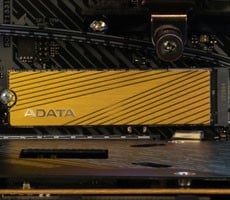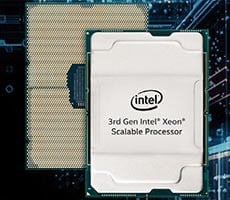Software and Administration (cont.)
There is a mobile app for iPhone, Android, and Windows Phone.

Backups
The tab labeled backups gives you a lot of flexibility when it comes to data protection. First, since this review unit is setup in RAID 1 out of the box, there's no need to actually backup anything on the disks themselves, as it's done automatically. Everything that is written to one of the disks is mirrored to the other one, so you have two copies of every file.
However, there are still many tasks that can be carried out relating to backups. These include:

USB Backups: Connecting a USB drive to the unit and copying the contents to the drive.
Remote backups: Backing up the My Cloud to another server on or outside the network.
Internal backups: This is backing up from folder-to-folder within the My Cloud drive.
Cloud Backups: This is backing up the My Cloud to an external cloud service like Elephant drive or Amazon.
Camera backups: This allows you to connect a camera to the My Cloud and have its contents backed up automatically.
Storage Options
This is a fun area to check out, as it allows you to see the status of your drives, read the S.M.A.R.T. values, change the RAID mode, manage iSCSI targets, and add virtual volumes to the EX2100. Here's what the RAID dialogue looks like if you decide to change it:

Apps
You can install 3rd party apps to this drive (just like with the EX2), and they expand the functionality of the drive by doing things like syncing with Dropbox or letting it stream media to a smart TV. The list of 3rd party apps is impressive, and includes:
aMule: P2P file sharing
IceCast: Server software for streaming media
Joomla: CMS and web design
phpBB: Open source bulletin board/forum software
phpMyAdmin: Open source admin tool for MySQL and CMS systems.
SqueezeCenter: Media server
WordPress: Open source CMS
Dropbox: File-hosing with sync to local devices
Transmission: BitTorrent client
Acronis TrueImage: Backup via disk image
Some Cool settings
While poking around in the voluminous "settings" window we spotted a few cool settings we wanted to bring to your attention.
First, there are a ton of useful utilities, including quick tests on the unit, one-click access to system logs, and the ability to reset everything to factory defaults should things go sideways. The NAS can also email you when the system generates warnings or things go critical, which is handy. You can also have it text you.
It's also one-click to disable Cloud Access, in case you are paranoid about someone tunneling into the device. You can also allow or disable Dashboard access remotely, which makes managing the device easier from afar.
We also like the Energy Saving area, which lets you enable sleep mode on the drives, and schedule downtime so the drives can be spun down when not in use. Enabling Media Streaming is also a one-click affair, both for DLNA server duties and for iTunes.
In general the "settings" area for this drive is like an all you can eat buffet. There are a lot of options for every aspect of the drive's behavior, and WD has seemingly left nothing "locked down" so even though most users will never need to make changes to most of these settings, WD has not shied away from giving its customers access to them.






